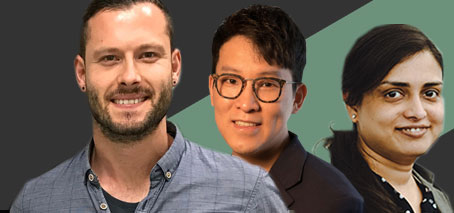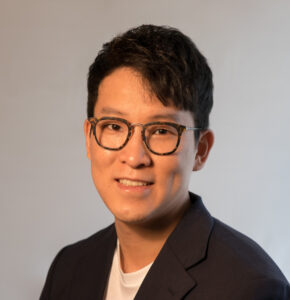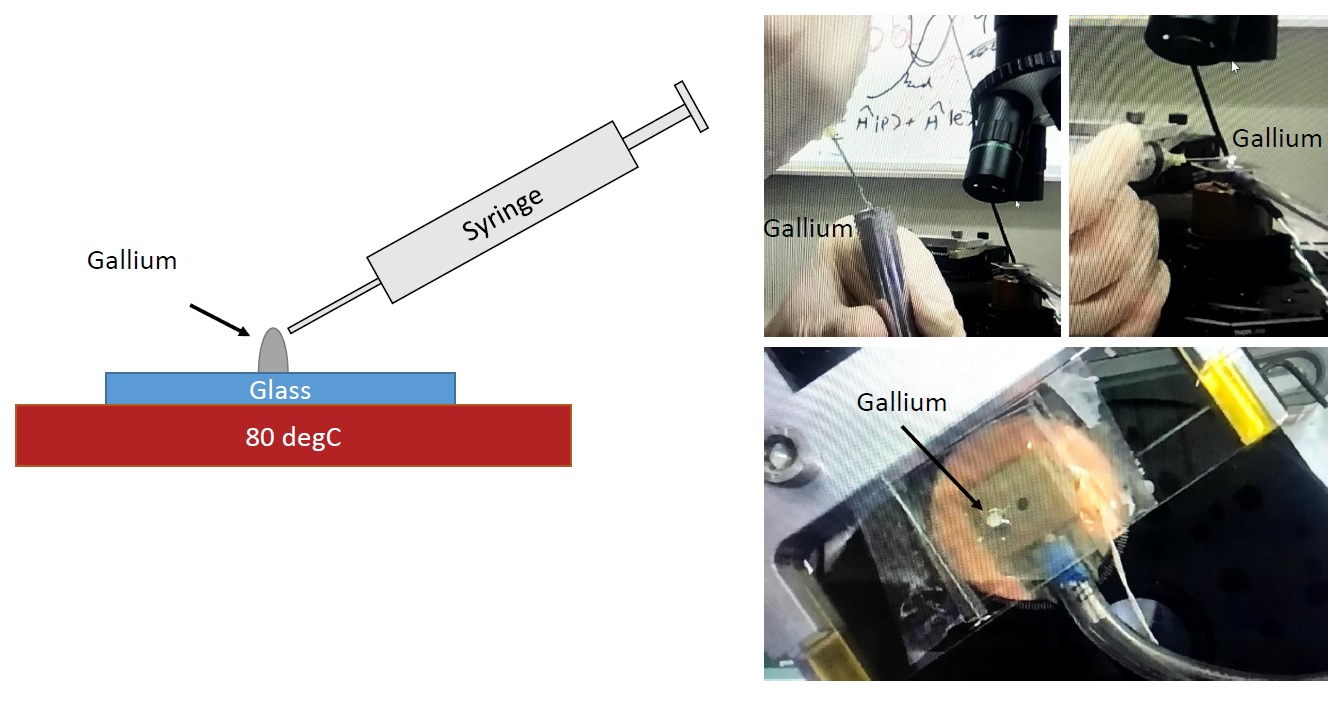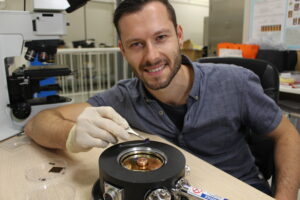
“The last year has honed all of our skills in remote and online communications”… FLEET PhD student Matthias Wurdack (ANU)
How does global research collaboration work, while Covid-19 still prevents international in-lab visits?
A recent FLEET collaboration found a creative solution, running in-lab demonstrations of new quantum technologies across multiple universities on two continents.
FLEET’s Matthias Wurdack (ANU) and Semonti Bhattacharyya (Monash) were able to consult with researchers in the New York lab of FLEET PI Jim Hone (Columbia University), demonstrating new techniques developed on either side of the Pacific Ocean.
Columbia postdoc Sanghoon Chae (now an A/Prof at Nanyang Technological University in Singapore) first initiated the transfer of knowledge by asking for more information on the FLEET’s recently published gallium-oxide ‘quantum armour’ technique.
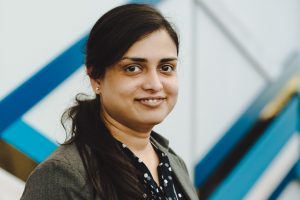
“Sanghoon’s technique will give us access to high-quality monolayers of these materials”… FLEET Research Fellow Semonti Bhattacharyya (Monash)
Sanghoon had been searching for new high- dielectric materials, which could be adapted to his 2D materials-based photonic/electronic platform.
“The new material needed to have uniform thickness and large coverage. More importantly, it needed to not degrade the intrinsic properties of two-dimensional materials, when it is deposited on the layer,” says Sanghoon.
“When I found the paper demonstrated by the FLEET group last year I immediately reported to my advisor James Hone that I had found something amazing, and we made contact.”
The contact initiated two online demonstrations, one on either side of the globe:
First, Matthias and Semonti conducted a demonstration for Sanghoon’s colleagues at Columbia University, run from Matthias’s lab at ANU, in which they demonstrated the synthesis (originally demonstrated by FLEET’s Kourosh Kalantar-Zadeh and Torben Daeneke’s group, published in Science 2017) and the deterministic transfer of the high- and ultrathin Ga2O3 glass on large scale (Advanced Materials 2020).
“The last year has honed all of our skills in remote and online communications,” says Matthias. “Live-streaming the fabrication steps of the new process from our lab at ANU meant that we could directly address questions from the researchers at Columbia during the process.”
Sanghoon then ran a corresponding workshop for Australian-based FLEET researchers, with around 15 FLEET attendees from Monash, Swinburne, ANU and RMIT watching while Sanghoon demonstrated the gold-assisted large-area exfoliation of atomically-thin transition metal dichalcogenide crystals (monolayer TMDCs), published in Science last year.
The Columbia technique will directly benefit FLEET research:
“TMDCs are at the heart of theme-2 research at FLEET. Being able to adopt Sanghoon’s technique will give us access to high-quality monolayers of these materials, this is essential to achieve scalability in future low-power electronics,” explains Semonti.
Conversely, use of the scalable FLEET technique to passivate and protect monolayer TMDCs will help PI James Hones’ group to realise electronic and optoelectronic devices with large functional areas based on two-dimensional materials.
“Among other things, the greatest advantage of FLEET technique is that it is easy to fabricate in large scale,” explains Sanghoon. “Normally, dielectric deposition requires semiconductor fabrication tools, but Matthias’s technique only needs heat stage and silicon rubber. This shift in thinking came as a big shock to us. Now, we plan to encapsulate monolayer TMDs by using top and bottom layers of Ga2O3.”
“The whole process was a very nice demonstration of researchers being creative in the face of challenges – the heart of science,” says Stuart Earle (Swinburne University), who attended Sanghoon’s training session.
“It was great how Semonti and Matthias got the broader centre involved. The Covid pandemic has shown how much smaller the world has grown, and made us realise that we’re much more of a closely-linked community thanks to the ready availability of our international colleagues (via online communication tools) than we previously appreciated.”
Stuart’s attendance itself was a nice demonstration of flexible work…
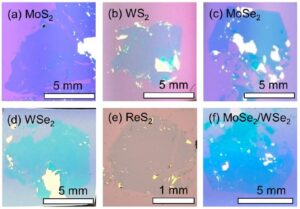
The Columbia technique to exfoliate 2D TMDCs will directly benefit FLEET research (image from Science 2020)
“I was actually on leave that day, and listened in while running through eucalypt forest in the Victorian Alps. We’d had the holiday booked for a while but I wanted to join in and see Sanghoon’s method.”
More information
- Contact Matthias Wurdack (ANU) matthias.wurdack@anu.edu.au
- Contact A/Prof Sanghoon Chae (NTU) sanghoonchae831@gmail.com
- Contact Dr Semonti Bhattacharyya (Monash) semonti.bhattacharyya@monash.edu

